All over the world, hip replacement surgeries are on the increase. Provisional data from the hip replacement register at Mater Dei shows that, in Malta during 2014, 145 people needed their hips replaced while another 11 needed revisions to old implants. With costs that run into the thousands, the problem of faulty implants caught the eye of a local research team of engineers and medics. Cassi Camilleri finds out more about their work in solving the dilemma. Photography by Elisa von Brockdorff
The reality is simple. While we may now live in a world with advanced health practices that have blessed us with longer lives than ever before, the bible of health issues related to old age progressively continues to grow. The challenge continues to be finding new treatments to deal with the growing list of ailments.
Bone weakening in old age is a leading cause of disability. The degenerative arthritis of joints—osteoarthritis—is in the top ten most disabling diseases in developed countries. According to data from the World Health Organisation, 9.6% of men and 18.0% of women over the age of 60 display problems because of osteoarthritis. While age is the biggest determining factor for development of the condition, a European Commission report also points to other risk factors such as obesity, physical inactivity, smoking, excess alcohol, and injuries.
Treating osteoarthritis generally requires joint replacement. And that is 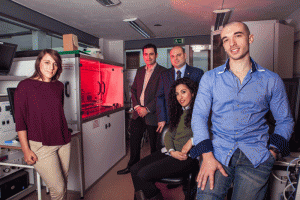 where the issues arise. Replacing a hip joint has become relatively standard in the west; however, the disease’s prevalence is fast becoming a problem. For Mr Ray Gatt, Head of Orthopedics at Mater Dei and a hip replacement revision specialist, this is a day-to-day reality. ‘We have a five year waiting list at hospital of people needing hip replacements,’ he states. ‘This [statistic remains high] despite carrying out approximately seven replacements a week.’ In fact, necessity has called for a new plan to be set in motion. As of last January (2015), ‘we [started] a series of procedures in which a team of seven surgeons will be performing 28 replacements per week.’ The figure excludes the procedures related to joint revisions because of dislocations, infection, or loosening for other reasons.
where the issues arise. Replacing a hip joint has become relatively standard in the west; however, the disease’s prevalence is fast becoming a problem. For Mr Ray Gatt, Head of Orthopedics at Mater Dei and a hip replacement revision specialist, this is a day-to-day reality. ‘We have a five year waiting list at hospital of people needing hip replacements,’ he states. ‘This [statistic remains high] despite carrying out approximately seven replacements a week.’ In fact, necessity has called for a new plan to be set in motion. As of last January (2015), ‘we [started] a series of procedures in which a team of seven surgeons will be performing 28 replacements per week.’ The figure excludes the procedures related to joint revisions because of dislocations, infection, or loosening for other reasons.
That is where the experts at the University of Malta come in.
“The wear rate achieved on the 316L alloy was significantly reduced, nearly equal to that of the superior
Co-Cr-Mo alloy”
The Four Horsemen for Hip Joints
Dr Joseph Buhagiar, Dr Bertram Mallia, and Dr Glenn Cassar, albeit separately, had all been carrying out research in leading UK universities related to surface engineering with the aim of enhancing the properties of metals. On their return to the Islands, the three soon established common ground between them. Later in 2013, Dr Pierre Schembri Wismayer came on board with the arrival of Malcolm Caligari Conti—the first MGSS [Malta Government Scholarship Scheme] funded Medical & Engineering interfaculty Ph.D. student.
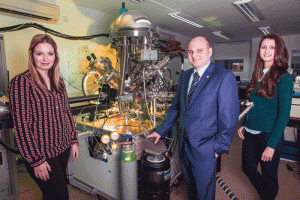 Consequently, they began their work towards one goal: to construct an effective, cost-efficient hip replacement joint surface.
Consequently, they began their work towards one goal: to construct an effective, cost-efficient hip replacement joint surface.
The work is threefold: starting with material characterisation, followed by corrosion and/or wear testing, and then moving on to biological testing. The aim of material testing and characterisation is to verify the material’s strength, and corrosion and wear resistance. If the joint breaks or degrades it can release potentially dangerous metallic ions or debris in the human body. In-vitro corrosion testing involves placing the materials in saline solutions that mimic the body. Cows’ serum is also used, with protein levels tweaked in order to more accurately simulate the joint inside a human body. This process also combines tribology (the science of wear, friction, and lubrication), corrosion, and cell work. Biological testing involves growing cells associated with bone, such as osteoblast cells, onto the material to ensure its biocompatibility and avoid harmful reactions after implantation.
The initial idea was to have implants made up of an iron-chromium alloy called 316L stainless steel instead of the standard Cobalt Chromium Molybdenum alloy (Co-Cr-Mo). Stainless steel is resistant to corrosion and is cheap compared to Co-Cr-Mo, with the latter costing three times as much as the 316L due to it being the best metallic alloy in joint replacements. While much cheaper, the 316L alloy wears down quickly.
The team want to keep making us of the less costly metal. Therefore, the only solution was to improve the surface. Thanks to contacts established by Buhagiar with Bodycote Hardiff GmbH (Germany), Mallia with Boride Services Ltd. (UK), as well as Cassar with Technion (Israel), each began modifying the surface of various combinations of metal alloys used in hip joints. The surface treatments used are called Kolsterising®, PVD, and PIRAC (see text box).
Because of the cost, the researchers test the material on flat and spherical pieces of metal (in tribology known as ball-on-flat). While this is not the geometry of an actual hip joint, Buhagiar explains the reasoning behind the decision: ‘a joint simulator would require an investment of nearly a million Euro and multiple actual hip joints, each treated in a novel way, for every test. For now, the priority is gathering data across a number of material combinations and a ball-on-flat works fine for that purpose.’
The results of the first tests were impressive. With the Kolsterising® treatment, the wear rate achieved on the 316L alloy was significantly reduced, nearly equal to that of the superior Co-Cr-Mo alloy. Novel PVD coatings are being investigated to continue improving the performance of such alloys. ‘I believe this in itself was something of an achievement,’ explains Buhagiar, ‘however because we did not top the wear rate of the actual Co-Cr-Mo, we couldn’t boast about that improvement. It has to be better to make a real difference in the game.’ The game is the international joint replacement market.
A dark past
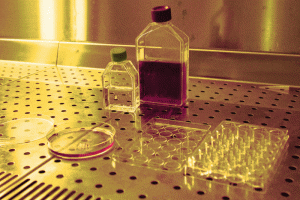 Metal-on-metal hip implants have something of a sordid history. They have been taken off the market and shunned by the medical community. The dramatic downfall of these implants came in the early 2000s with the release of the Articular Surface Replacement (ASR) joints, a brand of metal-on-metal prosthesis by DePuy, Johnson & Johnson’s Orthopaedics division. ASRs emerged onto the market to rave reviews. They were deemed ‘a godsend’, says Gatt, but a dangerously high failure rate was riding on their coat tails. In fact, according to disclosed court documents, an internal analysis conducted by Johnson & Johnson in 2011, not long after it recalled the implants, estimated that the all-metal device would fail within five years in nearly 40% of patients.
Metal-on-metal hip implants have something of a sordid history. They have been taken off the market and shunned by the medical community. The dramatic downfall of these implants came in the early 2000s with the release of the Articular Surface Replacement (ASR) joints, a brand of metal-on-metal prosthesis by DePuy, Johnson & Johnson’s Orthopaedics division. ASRs emerged onto the market to rave reviews. They were deemed ‘a godsend’, says Gatt, but a dangerously high failure rate was riding on their coat tails. In fact, according to disclosed court documents, an internal analysis conducted by Johnson & Johnson in 2011, not long after it recalled the implants, estimated that the all-metal device would fail within five years in nearly 40% of patients.
Because of the ASR scandal, metal-on-polyethylene devices are now used more. But these devices also have ugly issues. Metal-on-polyethylene joints suffer from corrosion and wear much like any other device and wear particles end up being deposited in the joint. In many cases, the body starts to treat these particles as invaders, reacting to them as it would an infection. The body starts to attack them. That leads to the bone ‘dissolving away’, or osteolysis. This results in reduced stability and an eventual need for replacement. On the other hand, in the case of ceramics—either ceramic-on-ceramic joints or ceramic-on-plastic—a high cost and brittleness become a massive problem. There have been cases of chipping and fracturing, as well as squeaking while walking. For these reasons, Buhagiar, Mallia, Cassar, and Schembri Wismayer continue to believe that metal-on-metal implants still hold much promise.
A Phoenix Can Rise
With seven more postgraduate engineering students contributing to the effort, thanks to local, industrial, and EU funding from THINK10K, Bodycote, STEPS and MASTER it!, work continues. Schembri Wismayer is currently overseeing the ‘in vitro’ testing as well as biological testing of the 316L, the Co-Cr-Mo, and the Titanium alloys. The good news is that for all the surface treatments, biocompatibility was sound. In fact, the cells grew better on the material which had undergone the Kolsterising® and PIRAC process. Surface-treated hip joints should lead to fewer problems in patients.
Naturally, difficulties continue to crop up. Both Schembri Wismayer and Buhagiar agreed that language proved to be an issue. ‘While all students spoke English, there were times when understanding each other became a distinct challenge,’ says Buhagiar. Engineers and medical researchers do not easily understand each other. They also had to adopt new work ethics. ‘Students from engineering had to get used to a new modus operandi. Because cells are alive they could no longer put their work aside for the weekend. Continuous care is needed when the work depends on living things’ explained Schembri Wismayer.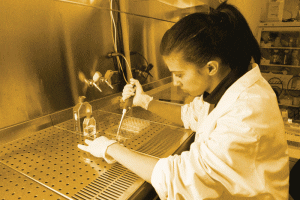
In fact, the biological element of the project turns the idea of finding a suitable material for hip joints into nothing short of a mythical hydra. ‘You tackle one problem and then you realise that this one problem you tackled might have negatively influenced another aspect and brought about another problem,’ Mallia explains. ‘This is why so much investment is required for this work’, he adds. Cassar agrees, noting that the revoking of international funds for studies related to metal-on-metal implants was ‘a distinct problem’ because not only does it not ‘solve the issue at hand,’ but it also ‘prevents us from ever trying to find a solution.’
There is no doubt about it—answers need to be found. As Gatt rightly points out, ‘this financial problem is unsustainable.’ On average, THR surgery costs €7,000 per patient while revisions, due to infections, to a single implant could cost anywhere between €75,000 and €100,000 […] sometimes considerably more depending on the case.’
Suddenly, investing €900,000 on a hip simulator does not seem like such a bad idea does it? Potentially more importantly, however, is that the lack of doctoral funding is translating into something of a brain drain for engineering in Malta. Mallia outlines the predicament very clearly, ‘you spend days and weeks and months transferring your knowledge to students, from undergraduate level onwards. A few good students go on to read for a Master’s degree. You help them get a scholarship and they continue learning, training, and working on their own research. […] You achieve momentum. Then, on graduation, your wish would be to keep that student to work on a Ph.D. and work on research. But that is not happening.’ Cassar goes on to explain why that is. ‘To retain these people you need a salary equal to industry. And that is not happening here. The reality is that few people at doctorate level can afford to stay at university full-time without a scholarship. The University of Malta and its students need attention from government. Some students reach astronomical levels when it comes to their research,’ says Cassar, and these are the kind of people that need to be retained. It is about creating a critical mass of researchers who will work together to come up with the answers to the big problems, as in this case with hip joints.
“THR surgery costs €7,000 per patient while revisions to a single implant on one individual due to infection could cost anywhere between €75,000 and €100,000”
The work being done by the team clearly shows how funds can be translated effectively into valuable output. The money invested in the laboratory and its ERDF-funded cutting edge equipment has put the department on the map. The team collaborate with international companies and research teams. ‘Our work proves that we deliver,’ concludes Cassar. ‘We are already doing a lot with what we have. Can you imagine what we could do if we had the resources we need?’ And until then, people continue growing older. •
Seven M.Sc. by Research students and one Ph.D. student registered with the Faculty of Engineering, University of Malta contributed to this work. This research was funded by THINK10K, University of Malta Research Fund, Bodycote Hardiff GmbH, Boride Services Ltd., Technion – Israel Institute of Technology and the scholarship schemes: STEPS (the Strategic Educational Pathways Scholarship—Malta), MASTER it!, and the postgraduate MGSS (Malta Government Scholarship Scheme). These scholarships were partially funded by the European Union—European Social Fund (ESF) under Operational Programme II—Cohesion Policy 2007-2013, ‘Empowering People for More Jobs and a Better Quality of Life’. The testing equipment was financed by ERDF (Malta), ‘Developing an Interdisciplinary Material Testing and Rapid Prototyping R&D Facility (Ref. no. 012)’, ‘Enhancing Health Biotechnology Facilities at the University of Malta (Ref. No. 081)‘, and ‘Strengthening of the Organic, Inorganic and Physical Chemistry Facilities (Ref. No. 309)‘.
Further Reading:
- ECD/European Union (2010), “Hip And Knee Replacement”, OECD (2010), Health at a Glance: Europe 2010, OECD Publishing.http://dx.doi.org/10.1787/health_glance-2010-en
- Langton, D., Jameson, S., Joyce, T., Gandhi, J., Sidaginamale, R., Mereddy, P., Lord, J. and Nargol, A. (2011). Accelerating failure rate of the ASR total hip replacement. The Bone & Joint Journal, 93-B(8), pp.1011-1016.
- Meier, B. (2013). Maker Aware of 40% Failure in Hip Implant. The New York Times.
- Wittenauer, R., Smith, L. and Aden, K. (2013). Background Paper 6.12 Osteoarthritis. Priority Medicines for Europe and the World “A Public Health Approach to Innovation”. [online] Available at: http://www.who.int/medicines/areas/priority_medicines/BP6_12Osteo.pdf [Accessed 16 Dec. 2014].

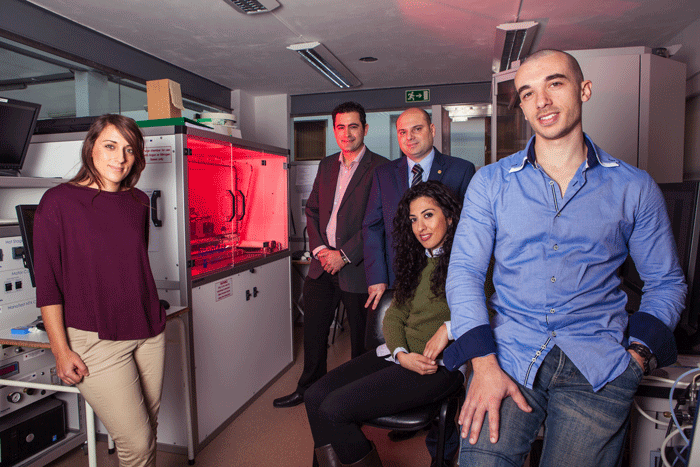




Comments are closed for this article!